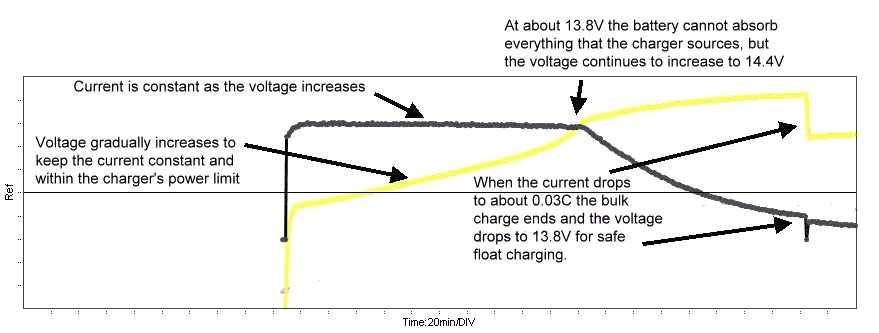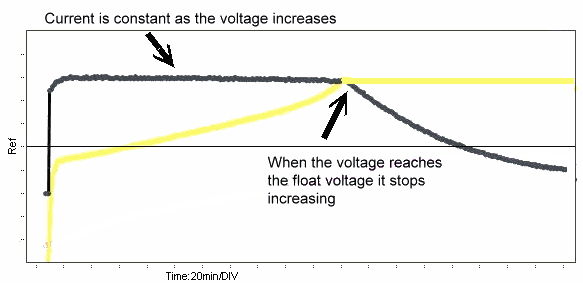
| December 5, 2023 | |||||||
How does a battery charger differ from a simple power supply? |
|
||||||
How does a lead acid battery charger differ from a power supply?A battery charger is a type of power supply. After all, what is required is to convert the AC power to something suitable to charge a battery. Eliminate the bells and whistles and what is left? Lead acid chargers Why do they sometimes call lead acid battery chargers "rectifiers?" This is because in the old days all lead acid batteries were flooded, and expected to be overcharged. There was limited ability to regulate voltage. As long as you had enough voltage, enough amperage, (and enough water) and rectified AC you could charge the battery. Overcharging was taken care of by adding water. Disassociating the water was the main problem with overcharging. Rectification was done mechanically, and was the enabling technology. As rectifiers became simpler the job became easier, but the word "rectifier" stuck. Why isn't any 13.8V power supply already a 12V battery charger? Even the smallest lead acid, or sealed-lead-acid battery can draw an enormous number of amps when it is fully discharged and you apply voltage to it. Few power supplies are big enough to do this, and those are expensive. So it is important to be able to have a constant-current feature to the power supply. It tries to apply 13.8V, for example, and finds that the battery is demanding more current than is available. So the charger automatically reduces the voltage in order to protect itself from over-current. At the reduced voltage the battery can't accept as much current. Thus the battery and charger work out an agreement to charge at the rate that the charger is happy with. Eventually, however, the battery will fill to the point that even at 13.8V it cannot absorb all the current that the charger can source. In other words the charging voltage starts at something low, like 13.2 volts and creeps up to 13.8. The charger has two choices, either to continue to raise the voltage to keep the current constant, or switch over to constant voltage. A multistage charger will often pick the first choice. It will continue to raise the voltage up to 14.5V in order to charge the battery quickly. Then it will watch the current drop and try to predict when the charge is finished. When it senses a full battery the multistage charger will drop the voltage back to 13.6V to 13.8V and let the battery float. This voltage will continue to charge the battery if needed, but is too low to cause any overcharging chemical reactions to occur. This charging algorithm is shown in the graph below. 
A taper charger will take the other path. When the voltage gets up to 13.8 volts it will stop raising the voltage and let the current slowly drop. Although this method takes longer to charge the battery than the multistage approach, it has a lot of benefits. One is that the charger is very accurate, and will never overcharge the battery. Another benefit is that the charger is less complicated, which means cheaper and more reliable. Large current chargers are particularly expensive to control in multi-stage mode. Another benefit is that a float charger works nicely as a battery backup power supply, giving a steady voltage that doesn't jump around when an external load is applied  |
|||||||
|
|
|
| |||||||||